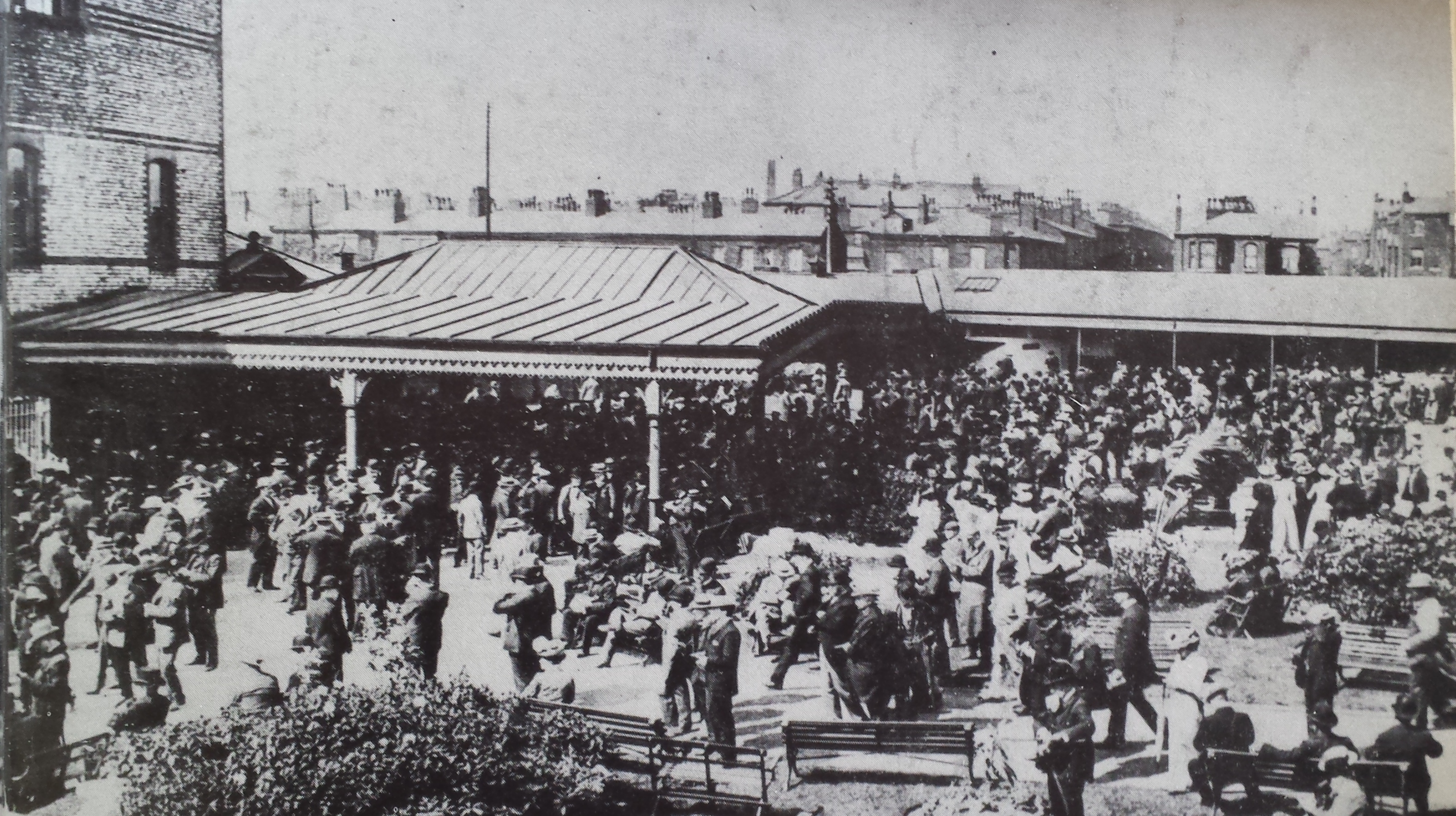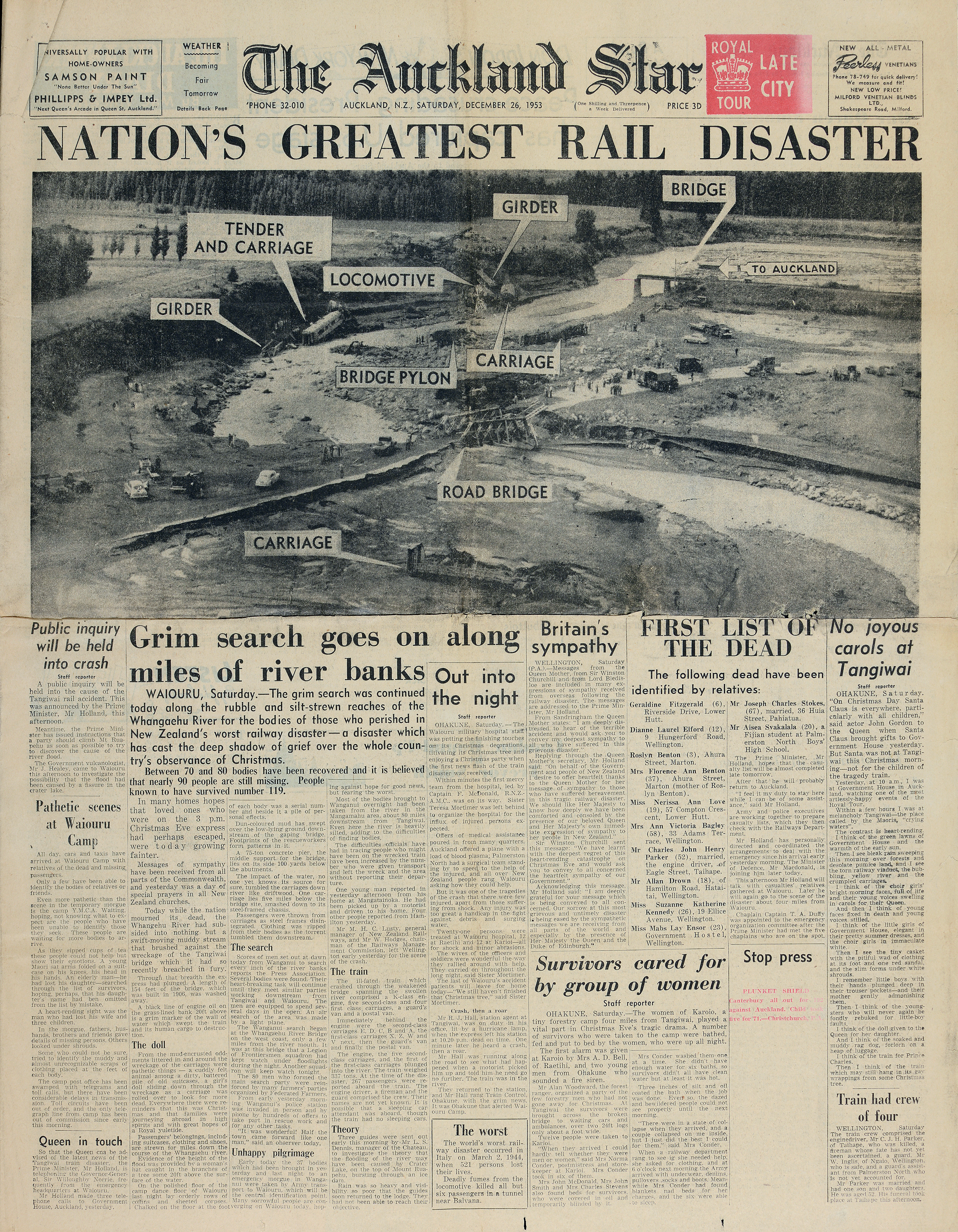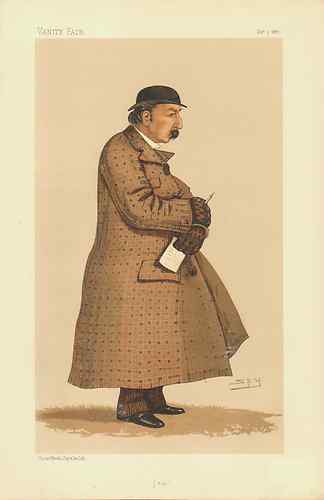|
Siffleuse
Siffleuse (1890–1908) was a British Thoroughbred racehorse and broodmare. She showed promising form as a two-year-old in 1892 but failed to win a race. In the following spring she recorded a huge upset when she won the 1000 Guineas at odds of 33/1. She went on to win the Yorkshire Oaks and finish second in the Park Hill Stakes and was retired from racing at the end of 1894. She had some success in a brief breeding career. Background Siffleuse was a chestnut mare bred in England by J. Best. As a yearling the filly was auctioned and bought for 1,000 guineas by John Blundell Maple who sent her to his private trainer Percy Peck at the Falmouth House stable in Newmarket. She was originally named ''La Belle Siffleuse'' possibly after Alice J. Shaw, a famous whistler of the time. Another, possibly complementary, explanation for her name was that she had respiratory problems which led to her "roaring" or making a whistling noise when galloping. Her sire Saraband was a very f ... [...More Info...] [...Related Items...] OR: [Wikipedia] [Google] [Baidu] |
1000 Guineas
The 1000 Guineas Stakes is a Group 1 flat horse race in Great Britain open to three-year-old fillies. It is run on the Rowley Mile at Newmarket over a distance of 1 mile (1,609 metres), and it is scheduled to take place each year in late April or early May on the Sunday following the 2000 Guineas Stakes. It is the second of Britain's five Classic races, and the first of two restricted to fillies. It can also serve as the opening leg of the Fillies' Triple Crown, followed by the Oaks and the St Leger, but the feat of winning all three is rarely attempted. History The 1000 Guineas was first run on 28 April 1814, five years after the inaugural running of the equivalent race for both colts and fillies, the 2000 Guineas. The two races were established by the Jockey Club under the direction of Sir Charles Bunbury, who had earlier co-founded the Derby. They were named according to their original prize funds ... [...More Info...] [...Related Items...] OR: [Wikipedia] [Google] [Baidu] |
Yorkshire Oaks
The Yorkshire Oaks is a Group 1 flat horse race in Great Britain open to fillies and mares aged three years or older. It is run at York over a distance of 1 mile 3 furlongs and 188 yards (2,385 metres), and it is scheduled to take place each year in August. History The event was established in 1849, and it was originally restricted to fillies aged three. The inaugural running was won by Ellen Middleton, owned by the 2nd Earl of Zetland. The present system of race grading was introduced in 1971, and the Yorkshire Oaks was subsequently classed at Group 1 level. It was opened to older fillies and mares in 1991. The race has been sponsored by Darley Stud since 2006, and it is currently held on the second day of York's four-day Ebor Festival meeting. The Yorkshire Oaks often features horses which ran previously in The Oaks. The first to achieve victory in both races was Brown Duchess in 1861, and the m ... [...More Info...] [...Related Items...] OR: [Wikipedia] [Google] [Baidu] |
Tommy Loates
Thomas Loates (6 October 1867 – 1910), born in Derby, England, was a three times British flat racing Champion Jockey and one of only seven jockeys to have won more than 200 races in a season in Great Britain. He won the English Triple Crown on Isinglass in 1892, as well as individual Classics on Donovan (1889 Derby) (for which he was a last-minute booking), Siffleuse (1893 1,000 Guineas) and St. Frusquin (1896 2,000 Guineas). On Isinglass, he also won the 1894 Eclipse and 1895 Ascot Gold Cup and he had another top class win on Desmond in Newmarket's July Stakes in 1898. Life Loates was regarded as the best of a family of four jockey brothers which included fellow Classic-winner, Sam Loates. He was apprenticed to Joseph Cannon at Newmarket and was known as "a good lightweight, with very good hands". For Donovan's Derby win, he weighed just 6 1/2 stone. Loates once narrowly escaped death when falling in the Liverpool Cup on Lord Derby's race mare Birch Rod. He was also b ... [...More Info...] [...Related Items...] OR: [Wikipedia] [Google] [Baidu] |
Sterling (horse)
Sterling (1868 – 26 March 1891) was a British racehorse and sire. Although he was not particularly successful in terms of major wins he was very highly regarded, being rated by his jockey Harry Custance as the equal of Thormanby. Background Sterling was a bay horse bred and owned by the Graham family who owned the Yardley Stud near Birmingham. His dam, Whisper, was bred by Mr. R. Taylor and produced ten foals between 1866 and her death in 1882. Sterling was her third foal and one of six sired by Oxford. Whisper's other good racers included Playfair. Racing career Sterling won five races including the Liverpool Autumn Cup at Aintree Racecourse. He also finished second to Bothwell in the 2000 Guineas at Newmarket on 25 April 1871. In the autumn of 1871, the owner of the Belmont Stakes The Belmont Stakes is an American Grade I stakes race for three-year-old Thoroughbreds run at Belmont Park in Elmont, New York. It is run over 1.5 miles (2,400 m). Colts and geldings c ... [...More Info...] [...Related Items...] OR: [Wikipedia] [Google] [Baidu] |
Manchester Racecourse
Manchester Racecourse was a venue for horse racing located at a number of sites around the Manchester area including; Kersal Moor, New Barnes, Weaste and Castle Irwell, Pendleton, then in Lancashire. The final home of the course, Castle Irwell, was closed in 1963. Despite its name, the course was never actually located within the boundaries of the ancient township of Manchester or the subsequent city of Manchester. Location and history The earliest known horse races in the Manchester area were run at Barlow Moor, first recorded in 1647, and again from 1697 to 1701 and the earliest record of horse-racing on Kersal Moor is from a notice in the '' London Gazette'' of 2–5 May 1687.Farrer, William and Brownbill, J. (editors) (1911). 'Townships: Broughton', ''A History of the County of Lancaster'': Volume 4, pp. 217–222. URL: http://www.british-history.ac.uk/report.aspx?compid=41408. Date accessed: 20 February 2008 There were a number of other short-lived courses or on ... [...More Info...] [...Related Items...] OR: [Wikipedia] [Google] [Baidu] |
Kempton Park Racecourse
Kempton Park Racecourse is a horse racing track together with a licensed entertainment and conference venue in Sunbury-on-Thames, Surrey, England, 16 miles south-west of Charing Cross, London and on a border of Greater London. The site has of flat grassland surrounded by woodland with two lakes in its centre. Its entrance borders Kempton Park railway station which was created for racegoers on a branch line from London Waterloo, via Clapham Junction. It has adjoining inner and outer courses for flat and national hunt racing. Among its races, the King George VI Chase takes place on Boxing Day, a Grade 1 National Hunt chase which is open to horses aged four years or older. History The racecourse was the idea of 19th-century businessman (and Conservative Party agent) S. H. Hyde, who was enjoying a carriage drive in the country with his wife in June 1870 when he came across Kempton Manor and Park for sale. Hyde leased the grounds as tenant in 1872 and six years later in July 1 ... [...More Info...] [...Related Items...] OR: [Wikipedia] [Google] [Baidu] |
St Leger
The St Leger Stakes is a Group 1 flat horse race in Great Britain open to three-year-old thoroughbred colts and fillies. It is run at Doncaster over a distance of 1 mile, 6 furlongs and 115 yards (2,921 metres), and it is scheduled to take place each year in September. Established in 1776, the St Leger is the oldest of Britain's five Classics. It is the last of the five to be run each year, and its distance is longer than any of the other four. The St Leger is the final leg of the English Triple Crown, which begins with the 2000 Guineas and continues with the Derby. It also completes the Fillies' Triple Crown, following on from the 1000 Guineas and the Oaks. The St Leger has rarely featured Triple Crown contenders in recent decades, with the only one in recent years being the 2012 2,000 Guineas and Derby winner Camelot, who finished second in the St Leger. History Early years The even ... [...More Info...] [...Related Items...] OR: [Wikipedia] [Google] [Baidu] |
Doncaster Racecourse
Doncaster Racecourse (also known as the Town Moor course) is a racecourse in Doncaster, South Yorkshire, England. It hosts two of Great Britain's 36 annual Group 1 flat races, the St Leger Stakes and the Racing Post Trophy. History Doncaster is one of the oldest (and the largest in physical capacity) established centres for horse racing in Britain, with records of regular race meetings going back to the 16th century. A map of 1595 already shows a racecourse at Town Moor. In 1600 the corporation tried to put an end to the races because of the number of ruffians they attracted, but by 1614 it acknowledged failure and instead marked out a racecourse. Doncaster is home to two of the World's oldest horse races: The Doncaster Cup The earliest important race in Doncaster's history was the Doncaster Gold Cup, first run over Cantley Common in 1766. The Doncaster Cup is the oldest continuing regulated horse race in the world. Together with the Goodwood Cup and Ascot Gold ... [...More Info...] [...Related Items...] OR: [Wikipedia] [Google] [Baidu] |
Oaks Stakes
The Oaks Stakes is a Group 1 flat horse race in Great Britain open to three-year-old fillies. It is run at Epsom Downs over a distance of 1 mile, 4 furlongs and 6 yards (2,420 metres), and it is scheduled to take place each year in late May or early June. It is the second-oldest of the five Classic races, after the St Leger. Officially the Cazoo Oaks, it is also popularly known as simply The Oaks. It has increasingly come to be referred to as the Epsom Oaks in both the UK and overseas countries, although 'Epsom' is not part of the official title of the race.) It is the third of Britain's five Classic races to be held during the season, and the second of two restricted to fillies. It can also serve as the middle leg of the Fillies' Triple Crown, preceded by the 1000 Guineas and followed by the St Leger, although the feat of winning all three is rarely attempted. History The event is named after ... [...More Info...] [...Related Items...] OR: [Wikipedia] [Google] [Baidu] |
Auckland Star
The ''Auckland Star'' was an evening daily newspaper published in Auckland, New Zealand, from 24 March 1870 to 16 August 1991. Survived by its Sunday edition, the ''Sunday Star'', part of its name endures in ''The Sunday Star-Times'', created in the 1994 merger of the ''Dominion Sunday Times'' and the ''Sunday Star''. Originally published as the ''Evening Star'' from 24 March 1870 to 7 March 1879, the paper continued as the ''Auckland Evening Star'' between 8 March 1879 and 12 April 1887, and from then on as the ''Auckland Star''. One of the paper's notable investigative journalists was Pat Booth, who was responsible for notable coverage of the Crewe murders and the eventual exoneration of Arthur Allan Thomas. Booth and the paper extensively reported on the Mr Asia case. In 1987, the owners of the ''Star'' launched a morning newspaper to more directly compete with ''The New Zealand Herald''. The ''Auckland Sun'' was affected by the 1987 stock market crash and folded a year l ... [...More Info...] [...Related Items...] OR: [Wikipedia] [Google] [Baidu] |
Evening Star (Dunedin)
__NOTOC__ Evening star may refer to: Astronomy * The planet Venus when it appears in the west (evening sky), after sunset ** The ancient Greeks gave it the name Hesperus * Less commonly, the planet Mercury when it appears in the west (evening sky) after sunset Plants * ''Oenothera biennis'', a medicinal plant * '' Mentzelia pumila'', and other species of ''Mentzelia'' Arts and entertainment * " Song to the Evening Star" ("''O du mein holder Abendstern''"), an aria from Richard Wagner's 1845 opera ''Tannhäuser'' * ''The Evening Star'', an engraving of a painting by Sir Thomas Lawrence for The Amulet, 1833 in combination with a poem by Letitia Elizabeth Landon. * ''The Evening Star'', an engraving of a painting by John Boaden for The Amulet, 1836, in combination with a poem by Letitia Elizabeth Landon. * "Evening Star", a poem by Edgar Allan Poe * ''The Evening Star'', a 1996 sequel to the film ''Terms of Endearment'' * ''Evening Star'' (Fripp & Eno album), 1975 * ''Evening S ... [...More Info...] [...Related Items...] OR: [Wikipedia] [Google] [Baidu] |
James Octavius Machell
Captain James Octavius Machell (1837–1902) was an influential figure in British horse racing during the final decades of the 19th century. He was a respected judge of horses and an astute and highly successful gambler. During a career that lasted almost forty years he managed and trained eleven English classic winners and was himself the owner of a record three Grand National winners. Early life James Machell was born at Etton Rectory near Beverley on 5 December 1837, the youngest child of the Reverend Robert and Eliza Machell. He attended Rossall School near Fleetwood Lancashire from 1846 to 1854. In 1857 he joined the army and was posted to India, becoming involved with the suppression of the Indian mutiny. His regiment returned home to be quartered on The Curragh in Ireland where Machell spent the next seven years. During this period he participated in horse racing and in 1862 became the leading owner in Ireland. The same year he was promoted from Lieutenant to Capt ... [...More Info...] [...Related Items...] OR: [Wikipedia] [Google] [Baidu] |



